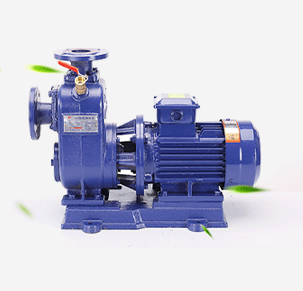Greek
- Afrikaans
- Albanian
- Amharic
- Arabic
- Armenian
- Azerbaijani
- Basque
- Belarusian
- Bengali
- Bosnian
- Bulgarian
- Catalan
- Cebuano
- Corsican
- Croatian
- Czech
- Danish
- Dutch
- English
- Esperanto
- Estonian
- Finnish
- French
- Frisian
- Galician
- Georgian
- German
- Greek
- Gujarati
- Haitian Creole
- hausa
- hawaiian
- Hebrew
- Hindi
- Miao
- Hungarian
- Icelandic
- igbo
- Indonesian
- irish
- Italian
- Japanese
- Javanese
- Kannada
- kazakh
- Khmer
- Rwandese
- Korean
- Kurdish
- Kyrgyz
- Lao
- Latin
- Latvian
- Lithuanian
- Luxembourgish
- Macedonian
- Malgashi
- Malay
- Malayalam
- Maltese
- Maori
- Marathi
- Mongolian
- Myanmar
- Nepali
- Norwegian
- Norwegian
- Occitan
- Pashto
- Persian
- Polish
- Portuguese
- Punjabi
- Romanian
- Russian
- Samoan
- Scottish Gaelic
- Serbian
- Sesotho
- Shona
- Sindhi
- Sinhala
- Slovak
- Slovenian
- Somali
- Spanish
- Sundanese
- Swahili
- Swedish
- Tagalog
- Tajik
- Tamil
- Tatar
- Telugu
- Thai
- Turkish
- Turkmen
- Ukrainian
- Urdu
- Uighur
- Uzbek
- Vietnamese
- Welsh
- Bantu
- Yiddish
- Yoruba
- Zulu
Telephone: +86 13120555503
Email: frank@cypump.com
Δεκ . 16, 2024 18:11 Back to list
Calculating Slurry Pump Performance and Efficiency for Optimal System Design
Understanding Slurry Pump Calculations
Slurry pumps play a crucial role in various industries, especially in mining, construction, and waste management where abrasive and viscous materials need to be transported. Properly calculating the requirements for a slurry pump ensures efficiency, reduces downtime, and minimizes wear on the pump components. The calculation process incorporates various factors including pump type, fluid properties, flow rate, and system design, which are essential for selecting the right slurry pump for specific applications.
Key Factors in Slurry Pump Calculations
1. Flow Rate The first step in slurry pump calculations is determining the required flow rate, usually measured in gallons per minute (GPM) or liters per second (L/s). This is influenced by the specific needs of the application, such as the volume of material to be transported over a particular time frame. A careful assessment of the flow requirements ensures that the pump operates within its design specifications.
2. Slurry Density The density of the slurry, which is the mass of the material per unit volume, significantly influences the pump's capacity and performance. Slurries can range from water-like fluids to thick muds containing a high percentage of solids. It’s essential to know the density of the slurry, as this information is crucial for determining the hydraulic performance of the pump.
3. Viscosity The viscosity of the slurry affects how easily it flows through the pump and the piping system. Higher viscosity slurries require more power to pump, which can affect the pump selection and the overall energy consumption. During calculations, it's important to account for viscosity changes due to varying temperatures or concentrations of solids.
4. Total Dynamic Head (TDH) The Total Dynamic Head is a critical component in slurry pump calculations. It represents the total equivalent height that the pump must work against, which includes the vertical lift, friction losses in the pipe, and any additional pressure required (like pressure at discharge). Understanding TDH helps in selecting the right pump size and type, ensuring it can handle the specific operational requirements.
slurry pump calculation xls

5. Pump Type and Material Not all pumps are suitable for slurry applications. Horizontal and vertical centrifugal pumps are common choices for transporting slurries. Additionally, the material of the pump components must withstand wear from abrasive solids. Hence, engineers must consider both the type of pump and its construction material based on the composition of the slurry.
6. Pump Efficiency Pump efficiency is another essential aspect. This metric indicates how effectively the pump converts input power into hydraulic energy. Selecting a high-efficiency pump can lead to significant energy savings and lower operational costs.
Practical Application
Using a slurry pump calculation spreadsheet (like those found in many engineering software) can facilitate this complex calculation process. These tools typically allow input of variables such as flow rate, density, viscosity, and head requirements, providing quick access to vital outputs such as pump size, power requirements, and estimated operational costs.
Conclusion
In summary, slurry pump calculations are fundamental to the successful operation of systems that deal with the transportation of abrasive and viscous materials. By comprehensively analyzing factors such as flow rate, density, viscosity, TDH, pump type, and efficiency, engineers can make informed decisions that lead to optimized performance and longevity of slurry pump systems. Investing time in accurate calculations will ultimately result in cost savings, improved efficiency, and enhanced operational reliability in slurry transport applications.
-
ISG Series Vertical Pipeline Pump- Chi Yuan Pumps Co., LTD.|High Efficiency&Compact Design
NewsAug.02,2025
-
Heavy-Duty Mining Sludge Pumps - Wear-Resistant Slurry Handling
NewsAug.02,2025
-
Horizontal Split Case Pump with GPT-4 Turbo | High Efficiency
NewsAug.01,2025
-
ISG Series Pipeline Pump - Chi Yuan Pumps | High Efficiency, Durable Design
NewsAug.01,2025
-
Advanced Flue Gas Desulfurization Pump with GPT-4 Turbo | Durable & Efficient
NewsJul.31,2025
-
ISG Series Vertical Pipeline Pump - Chi Yuan Pumps | Advanced Hydraulic Design&Durable Construction
NewsJul.31,2025










